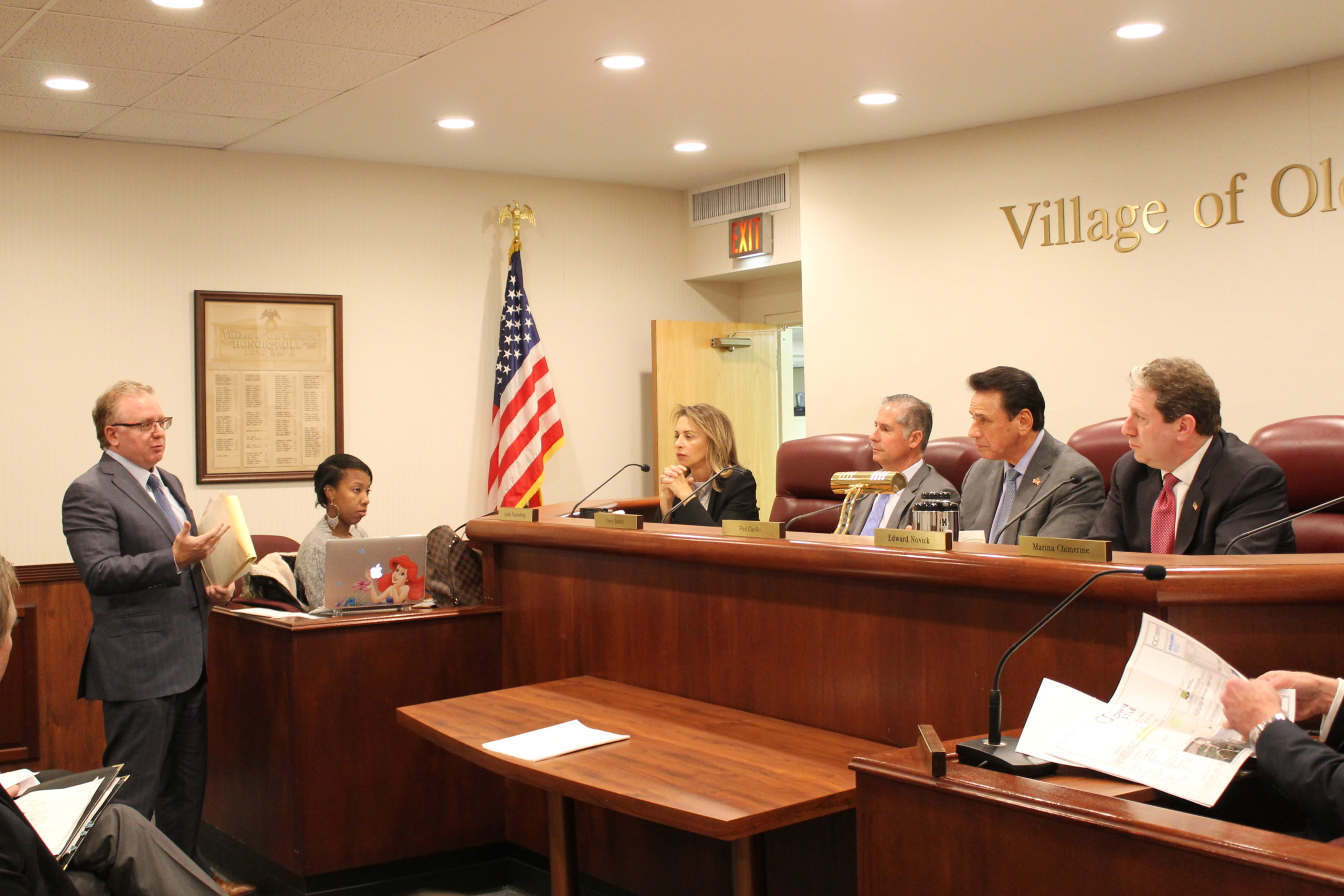Old Westbury trustees unanimously voted to upgrade existing cellular network equipment in the village Monday night, but a hearing was continued on nearly two dozen proposed wireless antennas.
Crown Castle attorney Robert Gaudioso, representing the country’s largest wireless infrastructure provider, told the Old Westbury Board of Trustees he was asking for approval on only two of the proposed nodes in the village and plans to discuss the other 22 sites when the hearing is continued at the Dec. 18 meeting.
Village Administrator Brian Ridgway said the two approved are replacements of two existing whip antennas with panel antennas along the south side of South Service Road in Old Westbury. Gaudioso said the dated equipment was installed in 2008.
Gaudioso said based on the Telecommunications Act of 1996, villages are not permitted to deny wireless companies the ability to install equipment if a lack of coverage can be proved and the carrier keeps all radio frequency limits below the federal limit.
Gaudioso said the antennas, which will provide Verizon Wireless service, emit approximately 2.8 percent of the allowable limit, far below federal guidelines.
Crown Castle’s equipment is designed for additional carriers to be added after construction, and Gaudioso said each pole could handle two to three carriers. Only four major carriers exist, Gaudioso said, including Verizon, AT&T, Sprint and T-Mobile.
If a second carrier wanted to be added to any antennas, Gaudioso said he would have to return to the board for approval. Each carrier would increase the radio frequency emissions by approximately 2.8 percent. If carriers do not comply, Gaudioso said, they risk losing their FCC license.
Since August, the village has continued a public hearing on 22 separate proposed cell antennas, also known as nodes, on both existing and new poles throughout the village.
Ridgway said since the Oct. 16 meeting, trustees spent more than three hours visiting the sites, marked by Crown Castle with either an orange stake for a proposed new pole or an orange ribbon on an existing pole, and have asked Crown Castle for some changes, especially in areas surrounded by trees since the leaves will reduce the effectiveness of the transmitter.
“We tried to mitigate as much as possible for poles close to homes, looking at the aesthetics and the propagation of coverage in the area,” Mayor Fred Carillo said.



